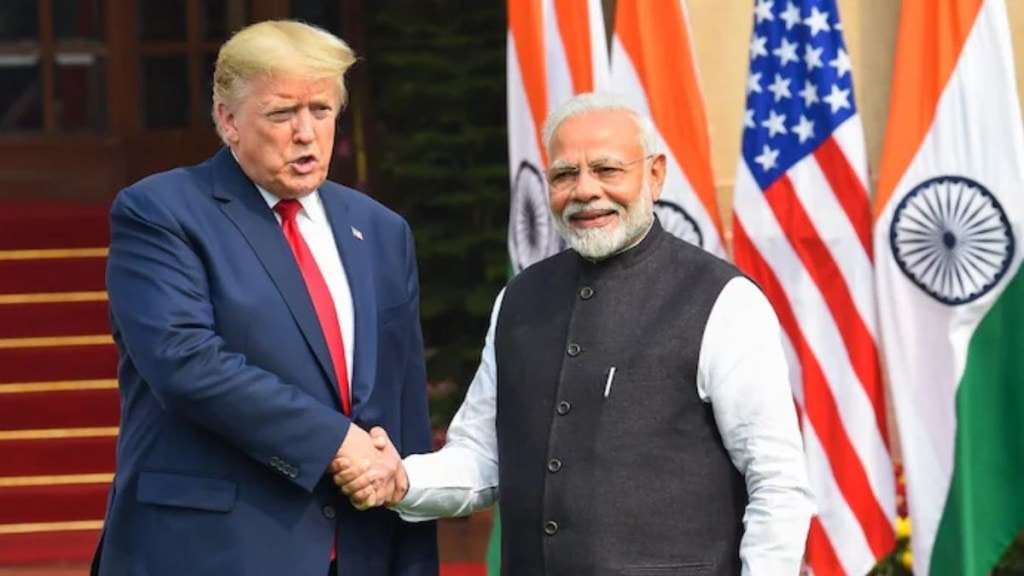By Anita Inder Singh
A “rocky ride” often creates or reflects “uncertainty”. Those two labels describe the current Indo-US relationship. US President Donald Trump’s latest claim that Prime Minister Narendra Modi told him in a phone call that India would stop buying Russian oil has been denied by Delhi. India has retorted that no such phone call took place. Questions about trust and dependability are raised by India, which earlier denied Trump’s assertion that he brokered an India-Pakistan ceasefire in the summer. Once again, is India lying, or is Trump?
Until Trump 2.0, Indo-US ties were marked by frequent references to the world’s largest democracies. But the democratic decline of both countries is now frequently and hotly debated among liberal democracies. Democracy also implied that India and the US could publicly disagree with each other because democracy is, first and foremost, about intellectual and political choice. But a hypersensitive Delhi has, on occasion, criticised the US media, which is politically and intellectually independent, for its biased coverage of India. Delhi also seems to forget that the Indian media and non-official Indians often criticise the US. In contrast, the American media and government don’t react to Indian stricture.
During the Cold War, the US displayed its superpower through its economic prowess and military alliances. Aligned America was ill at ease with non-aligned India, yet democracy defined their relationship during that period and for more than three decades after the Cold War ended. Today, non-alignment has the same meaning—maximising India’s foreign policy options. The terms “strategic autonomy” and “multi-alignment” are favoured by India’s current political dispensation.
After less than a year, Trump 2.0 has shown that multi-alignment is impossible. Strategic autonomy has been controversial, given India’s continuing dependence on Russian weapons. It is unclear why India has rejected the US’s F-35 aircraft. Strategic autonomy was on display when Indian troops took part in the Zapad-2025 drills, held in the Russia-Belarus Baltic area, where Moscow and Minsk simulated a nuclear strike on an “adversary”. This has been critically noted by Washington. Meanwhile, performing a typical U-turn, Trump has predicted that an expansionist Russia can be defeated in Ukraine, which only last February he dismissed as a country with no cards to play against Moscow.
India ended up praising Trump’s Gaza peace plan four times in one day as he demanded the Nobel Peace Prize for ending eight wars. India’s flattery has been to no avail. Perceiving itself as a global player, Delhi is against hyphenating India and Pakistan after clashes between their forces in the wake of the terrorist attack on Pahalgam. But India may have done much to hyphenate itself with Pakistan by repeatedly insisting that Trump did not mediate a ceasefire between them in May.
Meanwhile, Russia, the country India asserts has never hurt its interests, supported Trump’s many declarations that he brokered an Indo-Pak ceasefire. India is upset with Trump’s 50% tariffs. Trump has even been pushing the European Union to introduce 100% tariffs on India.
At another level, a $100,000 fee for H1-B visas, over 70% of which are claimed by Indian citizens, is tearing the US and India apart as both negotiate a trade deal. Trump is indifferent to Delhi’s red lines on American agricultural exports to India. But India must defend the interests of its farmers, who command the major share of its economy.
Trade and politics between conflicting countries sometimes mix. Authoritarian China has surpassed India economically over the last four decades. By refusing to give the US its rare earths for US industries, China has shown that its economic power gives it great bargaining power, which India, having made less progress, lacks. Consequently, China is among the largest trading partners of both India and the US.
This seems surprising in the case of India, given their territorial conflict and China’s occupation of stretches of Indian turf since 1962. India’s trade with China has actually increased since the clashes in Ladakh in 2020, and it seeks more Chinese investment. On the Russian energy plane, the US wants India to curb Russian energy imports to secure a trade agreement and lower tariffs. Three variables—immigration, energy, and trade—are now linked in unprecedented ways. Commercial choices often shape Trump’s political choices.
Significantly, the Western business community, which has had a strong presence in China, faces uncertain growth prospects there. The only large market that can offset China is India. But India remains an unattractive business destination for many. That, in turn, puts the spotlight on West Asia, Southeast Asia, and Africa. In other words, how competitive is India, with its world-famous labyrinthine bureaucracy, especially when some of its best-educated citizens migrate for economic reasons? The paths which India and the US seemed to tread together as the world’s largest democracies are now diverging in social terms in the sense of allowing more Indians to study in the US and take up American citizenship.
Part of the problem is that India never gave the US credit for a liberal culture that encouraged Americans to perceive their country as a nation of immigrants. Many Indians see their cultural genius as the reason why so many Americans of Indian origin have secured top-class jobs in top-class US companies and banks. Now, Trump’s clampdown has upset Indians on political and socio-economic grounds.
The Indo-Pacific, energy security, defence ties, and regional stability remain shared Indo-US strategic concerns. Whether Indo-US economic friction can be reconciled with strategic autonomy in an increasingly turbulent geopolitical landscape remains to be seen.
The writer is a founding professor at the Centre for Peace and Conflict Resolution, New Delhi
Disclaimer: Views expressed are personal and do not reflect the official position or policy of FinancialExpress.com. Reproducing this content without permission is prohibited.

